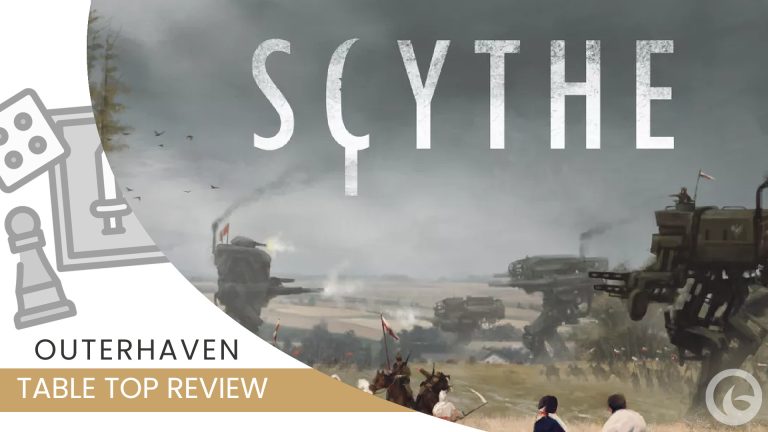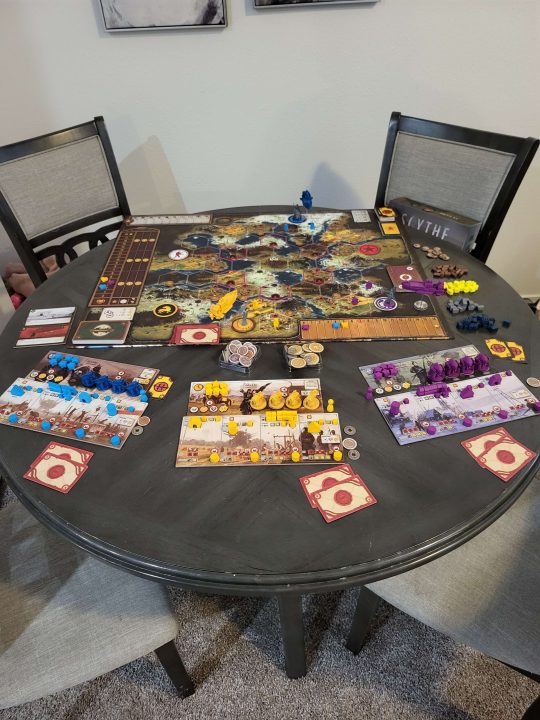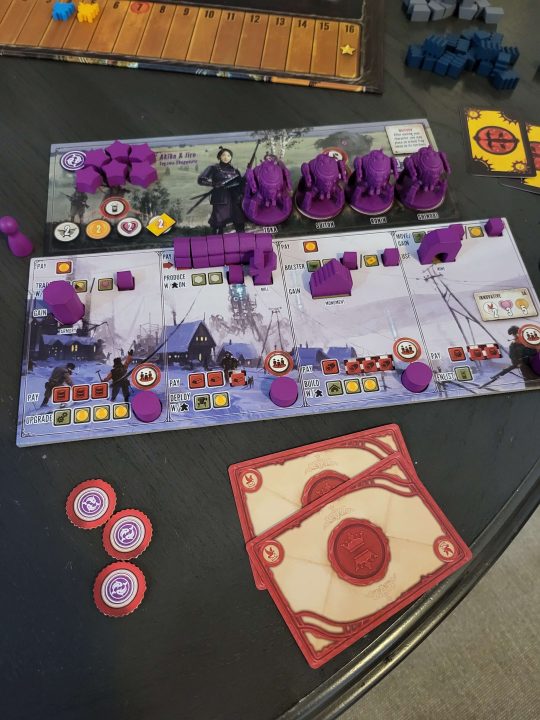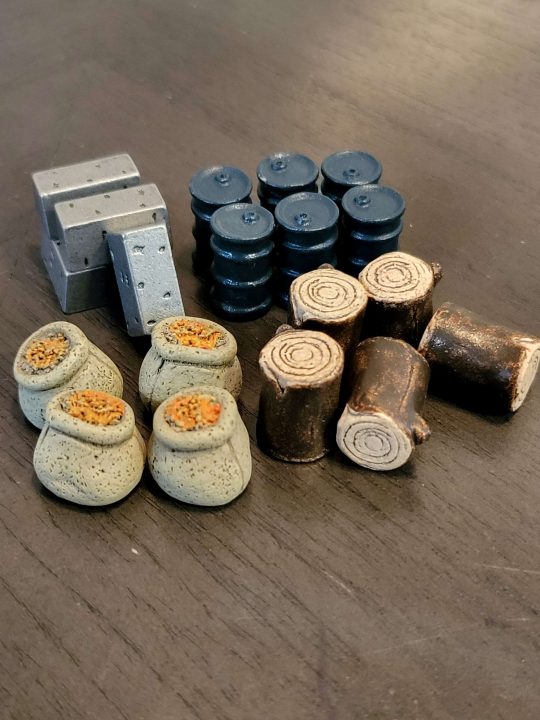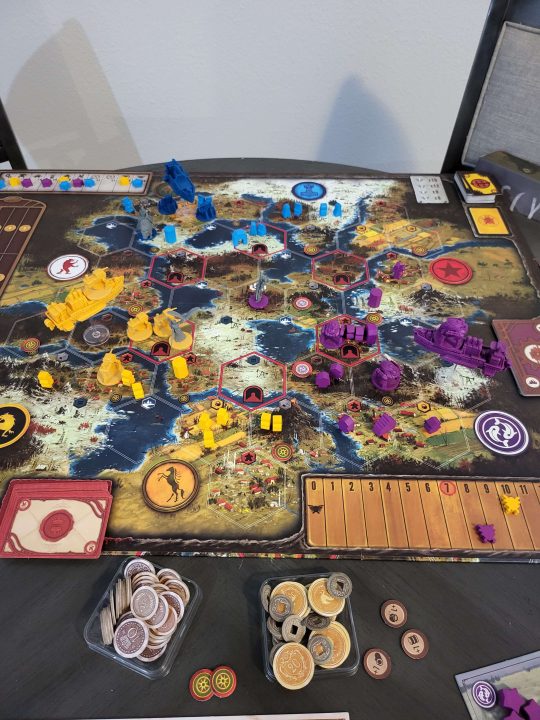When people talk about modern classics, Scythe always comes up – and for good reason. Designed by Jamey Stegmaier and brought to life through Jakub Rozalski’s incredible artwork, Scythe blends gorgeous visuals with deep, rewarding strategy. It’s part Eurogame, part alternate-history dieselpunk adventure, and somehow manages to make giant mechs and quiet farming villages feel like they belong in the same world.
Publisher: Stonemaier Games
Designer: Jamey Stegmaier
Players: 1–5 or 7 with expansions
Playtime: 90–120 minutes
Genre: Euro-style, Strategy, Engine Building
Release Year: 2016, Expansions 2016-2018
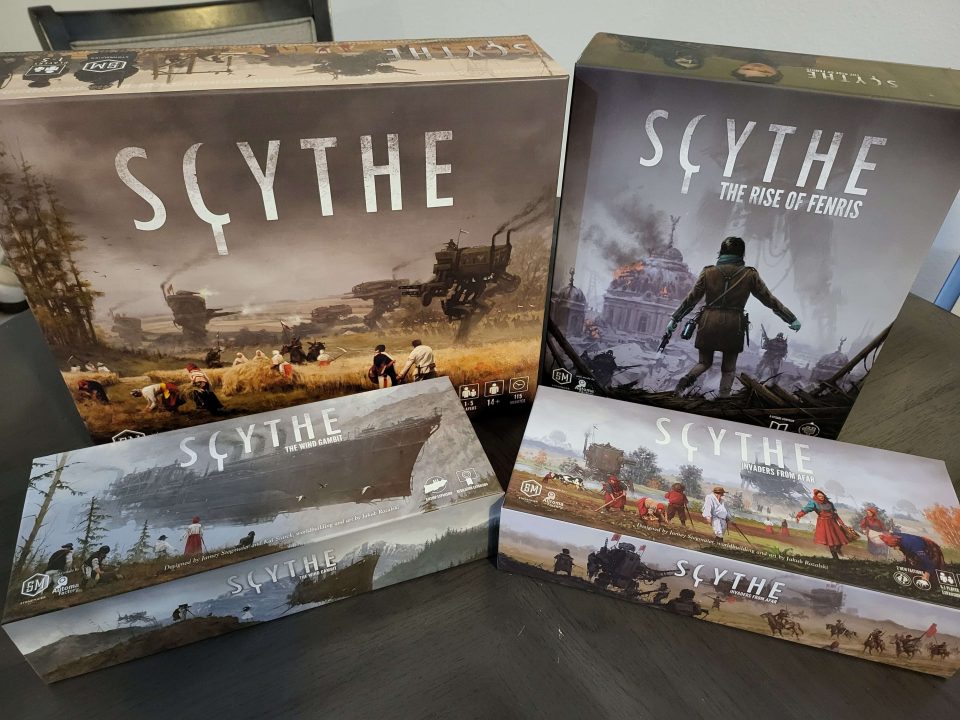
Setting the Scene
Scythe takes place in an alternate version of 1920s Europe after a great war has left the continent divided. Each nation is trying to rebuild and take control of “the Factory,” a mysterious city filled with leftover technology from the war. You’ll lead one of several asymmetric factions, each with its own abilities, starting position, and unique approach to power.
What really sells the setting is the artwork. Rozalski’s painted landscapes and mechanical designs are instantly recognizable – gritty, muted, and grounded in reality. The board alone looks like it belongs in a gallery. It’s a rare case where the art perfectly supports the gameplay: serious, strategic, but still imaginative.
How It Plays
Scythe is an engine-building and area-control game where you balance growth, efficiency, and timing. Each turn, you get two parts. You’ll choose one of four action columns on your player board to move, produce, trade, or bolster your forces – then on the second part of your turn, you build, deploy, enlist, or upgrade using resources.
The goal isn’t to crush your opponents in combat. Almost the opposite, fighting is fairly rare or even avoided. Scythe rewards smart planning and resource management. You’ll build up your economy, expand your territory, and time your moves to complete objectives and earn stars toward victory. When someone places their sixth star, the game ends, and the player with the most coins (earned from territory, popularity, and achievements) wins.
It’s a game about momentum – getting your engine running smoothly and adapting when others outpace you. Once you see how the top and bottom actions on your player board connect, it becomes a satisfying puzzle that keeps you coming back.
Components and Production
Like most Stonemaier Games releases, Scythe looks and feels fantastic. The board is large and detailed, the mechs are sturdy and distinct for each faction, and the dual-layered player mats keep everything organized. Even the coins and resource tokens have that satisfying weight. (There is a deluxe resources option, pictured below, to purchase that makes it look like barrels of oil and the metal have some real weight.)
Rozalski’s artwork ties it all together. It gives Scythe a tone that’s serious but not grim – industrial yet hopeful. Between the visuals and the component quality, it’s one of those games that turns heads at any table.
Learning and Accessibility
The first time you play Scythe, it can feel like a lot. There’s a fair number of icons and moving parts, and it takes a game or two for new players to see how everything connects. That said, the rulebook is excellent, and once you understand the flow – top action, bottom action – the systems start to make sense quickly.
It’s best suited for hobby gamers who enjoy building efficient engines and long-term strategy. It’s not a casual or party game, but it’s easier to learn than it looks. Once it clicks, it stays with you.
Expansions
Stonemaier Games has released several expansions that add real value without bloating the core game:
- Invaders from Afar adds two new factions and expands the player count to seven. Togawa (the purple pictured above) is my favorite faction.
- The Wind Gambit introduces airships and variable endgame conditions for more variety. I feel it’s more of a flavor enhancer than a core improvement. Outside of the concept behind it (airships carrying diesel-powered mechs = amazing), it’s not my favorite addition.
- The Rise of Fenris is a full campaign with evolving modules, story elements, and a new faction that becomes playable after completion (although they are overpowered by design). It’s the definitive way to experience Scythe once you know the base game.
Each expansion feels optional but meaningful—none of them exist just to sell more content.
Solo/Automa
Scythe includes a dedicated solo mode that uses an automa deck, an AI opponent system developed specifically for single-player sessions. It operates on clear logical rules and the difficulty scales well too, letting you adjust how aggressive/efficient the automa becomes.
Unlike many “tacked-on” solo modes, this one feels fully integrated. It captures the same tension, pacing, and reward loop as multiplayer Scythe – just without the downtime. If you’re someone who wants to sharpen your skills between group sessions, the automa makes Scythe one of the strongest soloable Euro-style games out there.
You can purchase the game at Stonemaier Games’ website.
Summary
Scythe is one of those rare games that feels both strategic and personal. It’s about building something efficient and beautiful, watching your faction evolve, and feeling like every turn mattered. The combination of theme, art, and mechanics makes it stand out even years after release.
Pros
- Deep, rewarding gameplay with minimal luck.
- Exceptional art and component quality. Especially the optional upgrades for puschase.
- Tons of replayability across factions and expansions.
Cons
- Steep learning curve for first-time players.
- Limited direct interaction – conflict is rare.
- Longer setup and teardown take some patience.


